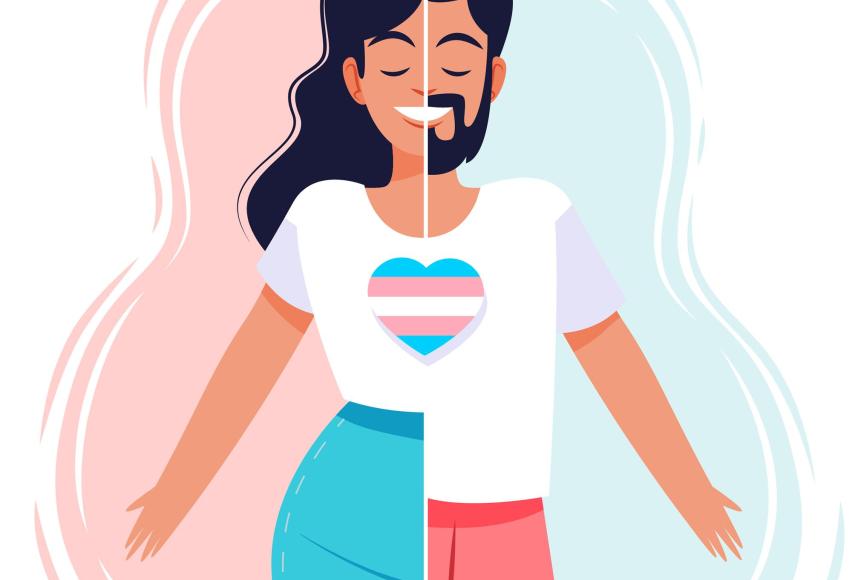Trich and Transgender: The Voices of Experience

Online test
Find out the severity of your symptoms with this free online test
Trichotillomania (TTM) is a disorder characterized by repetitive hair pulling that results in significant hair loss, emotional distress and impaired psychosocial functioning. It’s a disorder that affects about 0.5 – 2.0% of the population. It is almost four times as more common in females than in males. However, it is thought that the numbers may not be accurate due to the due to the stigma attached to the disorder. The loss of one’s hair can create significant emotional distress and carries meaning far beyond the loss itself.
Hair is so much more than simply a physiological trait. Hair holds deep cultural, social, personal, and even religious meaning, even if we sometimes don’t recognize it. Every community or group adopts certain styles or rituals or identifiers. In some cultures, hair and grooming rituals hold deep meaning and shape social constructs about the body as well as gendered cultural norms. For example, long, flowing hair has traditionally been associated with female sexuality. In some cultures, facial hair on men is considered a sign of virility or part of religious expression. Hair has even been associated with magic and sorcery. Not surprisingly, hair also plays a significant role in sex, sexuality, and gender expression, too, although hair style is certainly not indicative of one’s gender or sexual identity.
The loss of hair that results from repetitive pulling can be a source of significant distress. In fact, qualitative studies that gathered experiential information from people living with TTM found that the loss of hair is not simply a cosmetic issue. The loss of one’s hair can have a significant impact on self-esteem, identity, confidence and more. Many will go to great lengths to cover or camouflage their hair loss. Others choose to avoid social situations where hair loss may be noticed.
While qualitative studies of TTM and hair loss have revealed the experience of hair loss, little information is available about persons who are nonbinary or transgender. Hair style is a key part of gender identity and expression. How does the loss of hair from pulling affect their experience of navigating the norms and their own preferences for hair style, body hair, or facial hair? What are the issues that are most important for them?
Sometimes the best way to learn about an experience is from those who live it. Through blogs and forum posts, what can we learn about the experiences of transgender persons living with hair pulling? How can we help and support them?
A Hairy Situation
As one writer so eloquently put it, “hair tells a story about who we are.”
Most people have a style that they find personally comfortable. For a transgender person, that style may not conform to societal norms. They may prefer a style that is a mix of masculine and feminine, gender non-conforming, or genderfluid. The hair loss from pulling can make achieving that preferred look challenging. Some of the common themes mentioned in various forums included:
- Scalp hair isn’t the only place a person might pull. Beards, chest hair, pubic hair, brows, even arm hair can be plucked. For a transmasculine person trying to grow a mustache or beard, the repetitive pulling of facial hair can be a source of frustration. One person revealed in a forum that they continue to pull out the coarse hairs as they grow in despite desperately wanting a beard. They express feeling alone in their struggle.
- One of the themes commonly mentioned is that of having certain hair characteristics that were at odds with their identity. For example, several people who identified as transmasculine experienced increased distress and pulling when their hair got too long or leaned too much towards femininity. Most often this was prior to transition but some continued to struggle as they continued their transition, finding the place where they feel true to their identity.
- For transfeminine persons, TTM presents a challenge for growing hair. Hair pulling often leaves bald or sparse patches that can make achieving the look they desire difficult and at odds with their desired presentation.
- “Passing” seemed to be a concern and a source of distress for some. Still others were in the process of deciding on their style and their level of comfort.
While gender identity issues are not specifically linked to TTM, many people shared that they had a history of body focused repetitive behaviors such as hair pulling, skin picking, or lip and nail biting. Anxiety, depression and other mental health issues were also often mentioned.
Almost without exception, each person who shared expressed feelings of acceptance and a sense of peace or relief with their decision to transition. While they related that there were struggles, they were open to finding support and solutions.
One writer who has been open about their hair pulling, mental health issues and gender identity describes their relationship with their hair as a lens through which they can view their evolving sense of gender and struggles with mental illness, and how they interact. The lesson they’ve learned through their journey is described as one of patience.
The Message
In the stories and anecdotes that have been shared, the message that comes through is one of hope and determination. Many continue to work through their issues with TTM while navigating their gender presentation.
Many of the struggles for transgender people with TTM were not that different from what others have previously shared:
- Dealing with Feelings - Many of the people sharing their stories describe dealing with emotional issues such as anxiety, stress, depression and other emotions. Hair pulling or skin picking was frequently described as bringing relief to their distress.
- Seasons of Pulling - Some people described having periods of intense pulling and times when was less severe or even absent for some time.
- Response from Others – Many people expressed worry about being judged or a history of negativity from others. While they knew the hair loss drew attention, they also described pulling as an emotional release. There are also stories of finding support and allies and the experience of coming out.
Conclusion
Being able to learn about hair pulling within the trans community from those who live it offers insight into how TTM is experienced within the context of gender presentation. This kind of insight also fosters understanding and a sense of connection with others. Future research and greater understanding of how trich is experienced among different groups can bring a more personalized approach to treatments.
Thank you to the people who choose to share their experiences and journeys in the public space. Your courage may help someone who is searching for support find their community.
References
1. Melia, E. (n.d.). It’s hairy: Trichotillomania while transgender — The Thirlby. The Thirlby. https://www.thethirlby.com/camp-thirlby-diary/2019/5/13/its-hairy-trichotillomania-while-transgender
2. Reddit. (n.d.). Reddit - Dive into anything. https://www.reddit.com/r/asktransgender/
3. Reddit. (n.d.). Reddit - Dive into anything. https://www.reddit.com/r/asktransgender/comments/77drfr/trichotillomania_connected_to_transgender/
Online test
Find out the severity of your symptoms with this free online test
Start your journey with TrichStop
Take control of your life and find freedom from hair pulling through professional therapy and evidence-based behavioral techniques.
Start Now



